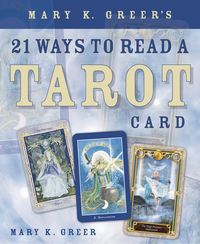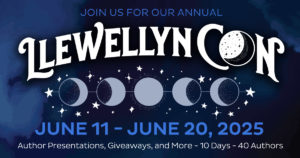Learning How to Prosper
Tarot shelves at bookstores are filled with beginner level books. Do we really need so many? Aren’t they all essentially the same?
I think we do need so many and that they are not essentially the same. First, they all differ in terms of voice and presentation. People learn differently and respond better to some styles of communication than to others. Every author has his or her own voice and way of explaining things. Second, not every tarot reader interprets or reads the cards in the same way. By seeing that there are so many different methods and schools of thought, new readers are encouraged to explore until they find what works for them.
This month we will look at eight different books that might be appropriate for beginners. Today’s book is 21 Ways to Read a Tarot Card by Mary K. Greer.
This book is arguably the one that would be considered of interest to both beginners and more advanced readers. No matter how long you’ve been reading the cards, the techniques in this book will show you something new.
It also arguably the one least like to be a beginner’s first book. The premise of the book is to pick one card and work your way through all 21 techniques. Now some are very quick, but some will take more time. So for a newbie to go through all 21 ways for all 78 cards, well, it’ll be a while before they actually start doing readings.
Instead, I could consider this a great adjunct to a beginner book or a second book. But I would encourage anyone interested in tarot to read it.
For the beginner, it will build on everything they’ve learned in other books. For example, nearly every book talks about the elemental associations of the suits. In step 6, Mode, Suit, Element, we learn are the elements, how to connect with them, and more importantly (for tarot reading) we learn to think about how they interact with each other. One of the most challenging part of reading is tying everything together. Being to see how the energy of cards affect each other will help with that.
And I just have to share an excerpt. My copy of this book is very written in and highlighted as I use it quite a lot, and in reviewing it for this entry, this caught my eye:
The goal of a reading is to learn how to prosper. Prosper comes from the roots meaning “to render one fortunate” or “toward one’s hope.” In addition to the obvious financial implications, to prosper is even more about experiencing satisfaction, happiness, and physical well-being. It’s the ability to meet challenges, actualize dreams, and to thrive and grow. To do this you have to break through patterns of habitual functioning and integrate insights in to everyday life. The highest function of the tarot, to paraphrase Joseph Campbell’s, is to awaken the heart. The goal is to interpret its symbols so as to enlighten and spiritually nourish the self—that is, to spiritually prosper. To complete a reading we have to find what will nourish us at all levels. That is what this final step [21] aims to do.
Isn’t that lovely? I just love Mary’s work.









I did not recognize the book at first, I honestly think you have a good working Title for one of your own here, Tarot: Learning to Prosper, or something like that …
.
Still will have to think about it, I’ve been doing alot of work lately, focused not simply on reading, on providing Qs with a Perspective apart from there own, which I would say is most of what I did till 2-3 years ago; but now there is more need for guidance beyond an exercise in self awareness, no? What to you think?
.
Anyhow I find myself adding this Blessings and how to use them Tableau to most every spread I pull.
.
1.2 Blessings.
. 3.4 How to use them,
It can get tricking, if your blessing are like a 10 of Swords, often the Blessings are rather rough cards compelling change actually.
.
Not primarly what I wanted to post today though,
Yestereday I found my next Must Have Tarot Deck, and I’m very choosy nowdays, I seldom HAVE to have a deck anymore, but this Mystic Dreamer Tarot, oh the cover art just blew me away, got to have it …
.
Later I noticed the author of the Text, but I’ld already decided to buy, will be picking up next payday, looking forward to the Art, and the Text.
.
Blessings, BB.